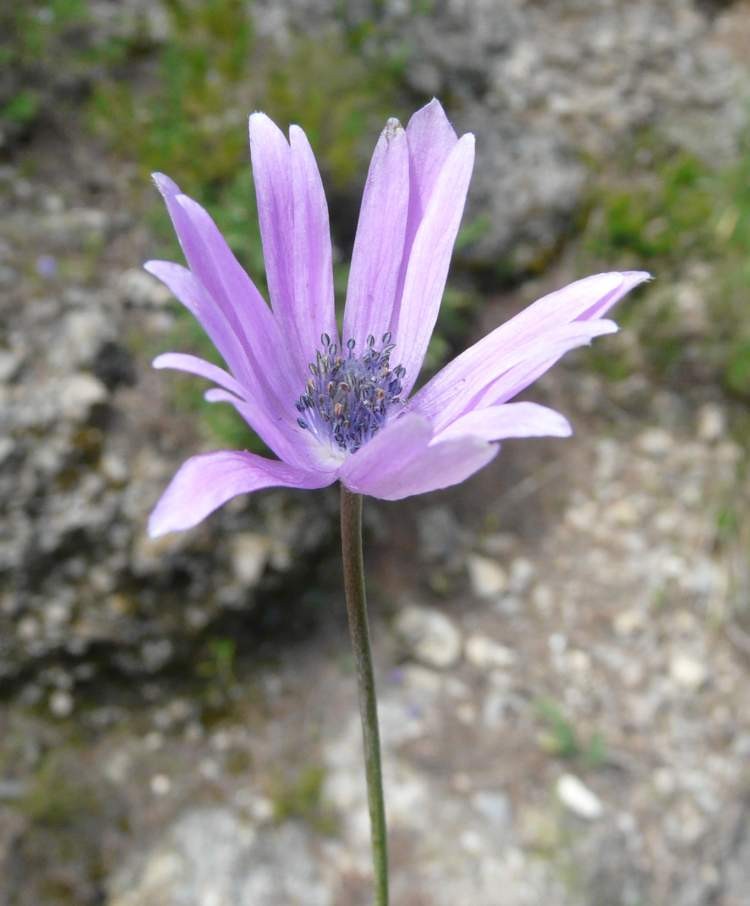Broad-leaved anemone
(Anemone pavonina)

Description
Anemone hortensis, commonly called broad-leaved anemone, is a perennial herbaceous flowering plant with an underground rhizome, in buttercup family Ranunculaceae. The genus name comes from the Greek (ánemos, meaning "wind"), as an ancient legend tells that the flowers open only when the wind blows. The species name hortensis (from Latin hortus, meaning "vegetable garden") refers to the easiness with which this plant can be cultivated. Anemone hortensis reaches on average 20–40 centimetres (7.9–15.7 in) of height. The stem is erect and pubescent. The basal leaves have a petiole 5–10 centimetres (2.0–3.9 in) long and are palmate or “hand-shaped”, with 3-5 toothed lobes. The solitary flowers are fragrant and range in color from white-bluish or mauve to red-purple, with a diameter of 3–6 centimetres (1.2–2.4 in). They have 12-20 lanceolate and acute petals, with numerous bluish or violet stamens and blue anthers. The flowering period extends from March through May. This plant is pollinated by wind or dispersed by animals. This plant is endemic to Mediterranean basin and it is distributed in France, Italy, Greece, Albania, Bulgaria, Serbia, Croatia, North Macedonia Montenegro and Turkey These plants grow at an altitude of 0–1,200 metres (0–3,937 ft) above sea level (rarely up to 1,800 metres (5,900 ft)). They are found in woods, vineyards, lawns and bushes. Anemone is a genus of flowering plants in the buttercup family Ranunculaceae. Plants of the genus are commonly called windflowers. They are native to the temperate and subtropical regions of all continents except Australia, New Zealand and Antarctica. The genus is closely related to several other genera including Anemonoides, Anemonastrum, Hepatica, and Pulsatilla. Some botanists include these genera within Anemone. Anemone are perennials that have basal leaves with long leaf-stems that can be upright or prostrate. Leaves are simple or compound with lobed, parted, or undivided leaf blades. The leaf margins are toothed or entire. Flowers with 4–27 sepals are produced singly, in cymes of 2–9 flowers, or in umbels, above a cluster of leaf- or sepal-like bracts. Sepals may be any color. The pistils have one ovule. The flowers have nectaries, but petals are missing in the majority of species. The fruits are ovoid to obovoid shaped achenes that are collected together in a tight cluster, ending variously lengthened stalks; though many species have sessile clusters terminating the stems.
Taxonomic tree:







